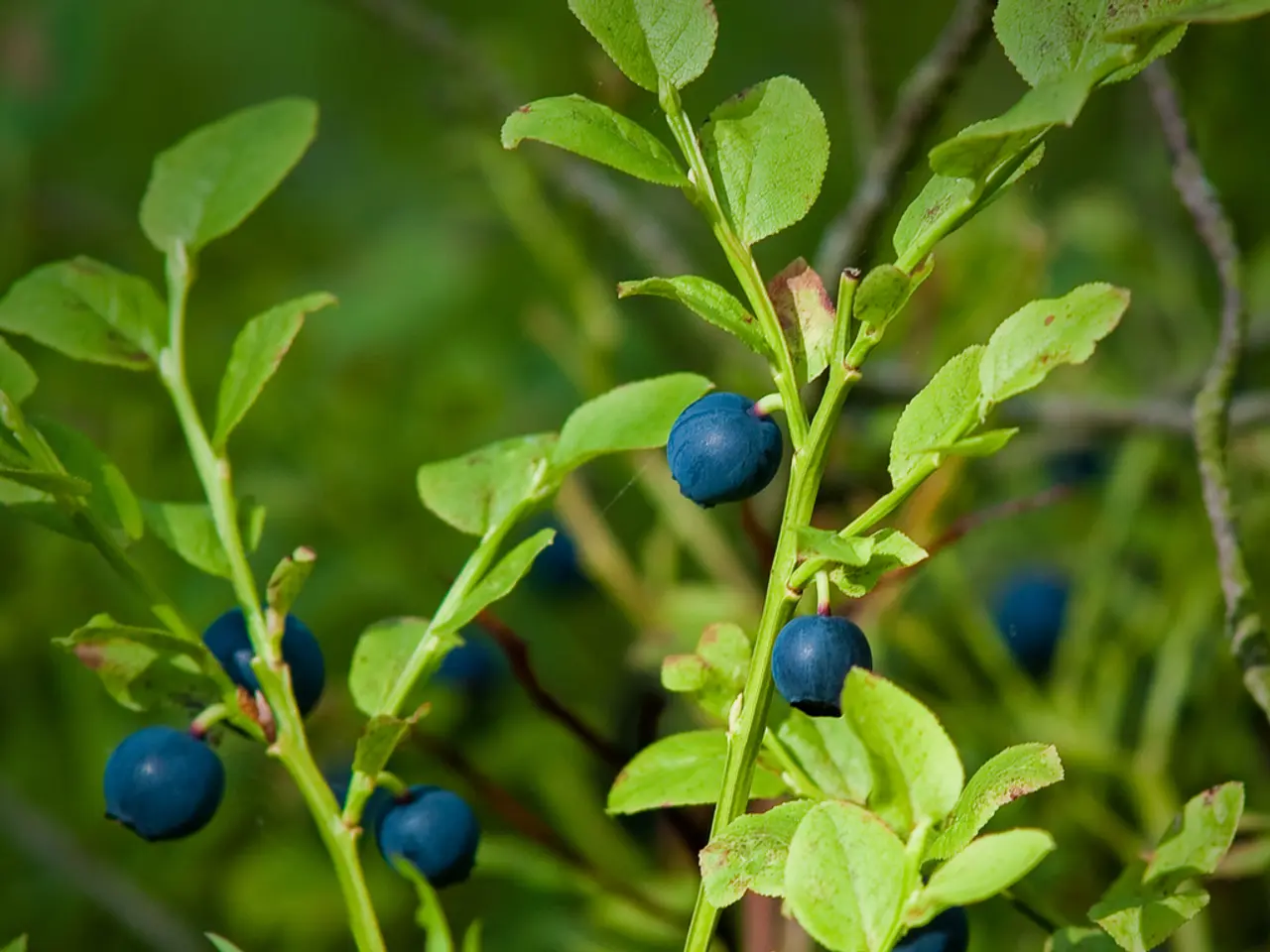Be mindful of berry poisoning: securely gather berries - stay clear of harmful look-alikes
================================================================
Wild berry picking can be a delightful summer activity, but it's important to be aware of potential dangers. Some wild berries are poisonous to humans and can contain toxic substances, while others may be contaminated with pathogens like the fox tapeworm.
One of the most dangerous poisonous berries is the bitter-sweet nightshade, which resembles blackberries or black currants. Despite its name, it is poisonous at any stage of ripeness and can cause hallucinations, loss of consciousness, or rapid heartbeat in humans. The deadly nightshade, another poisonous berry, can resemble blueberries.
The deadly nightshade contains the poisonous alkaloid atropine. Ingesting it can lead to serious health problems, including seizures and even death. It's essential to avoid these berries and any other unknown wild berries when foraging.
Another danger posed by wild berries is the fox tapeworm, a parasite transmitted through the feces of infected foxes. Some wild berries can be contaminated with the fox tapeworm, which causes severe liver damage if eaten raw. While the risk of fox tapeworm infection is low, it cannot be ruled out, especially in areas with a high fox population.
Children are particularly susceptible to berry poisoning when picking and eating berries unsupervised in the woods. To minimise the risk, wild berries should always be thoroughly washed or cooked before consumption and initially tested in small quantities. It's also recommended to only consume wild berries in small amounts due to potential discomfort for people with sensitive stomachs.
Fortunately, not all wild berries are dangerous. Blueberries, for example, are edible berries that are not only harmless but also healthy, with a high antioxidant content and a cell-protective effect. The lingonberry is another edible forest berry that grows in boggy or coniferous forest areas, has a characteristic bitter taste, and contains secondary plant substances with anti-inflammatory effects.
Wild-growing Juneberry bushes are often found on forest edges, in light forests, or on nutrient-rich soils, and their berries are rich in vitamin C, important minerals like potassium and iron, and have a refreshing and tart taste. Blackberries are common and rich in vitamin C and fiber.
It's also worth noting that there are dangerous, poisonous look-alikes among mushrooms. Always exercise caution when identifying and consuming wild mushrooms, and consider seeking the advice of an expert or a guidebook.
In summary, wild berry picking can be a rewarding and healthy activity, but it's crucial to take precautions to ensure safety. Always wash or cook wild berries before consumption, test them in small quantities initially, and be aware of the potential dangers of poisonous look-alikes. With these precautions in mind, wild berry picking can be a fun and enjoyable way to spend time outdoors.
Read also:
- Overweight women undergoing IVF have a 47% higher chance of conceiving naturally post-weight loss
- Bonsai Trees from Evergreen Species: Exploring Growth Characteristics & Distinct Qualities
- What temperatures may make walking your canine companion uncomfortable?
- Title: Information About Beovu: Potency, Form, Usage, and Additional Details





